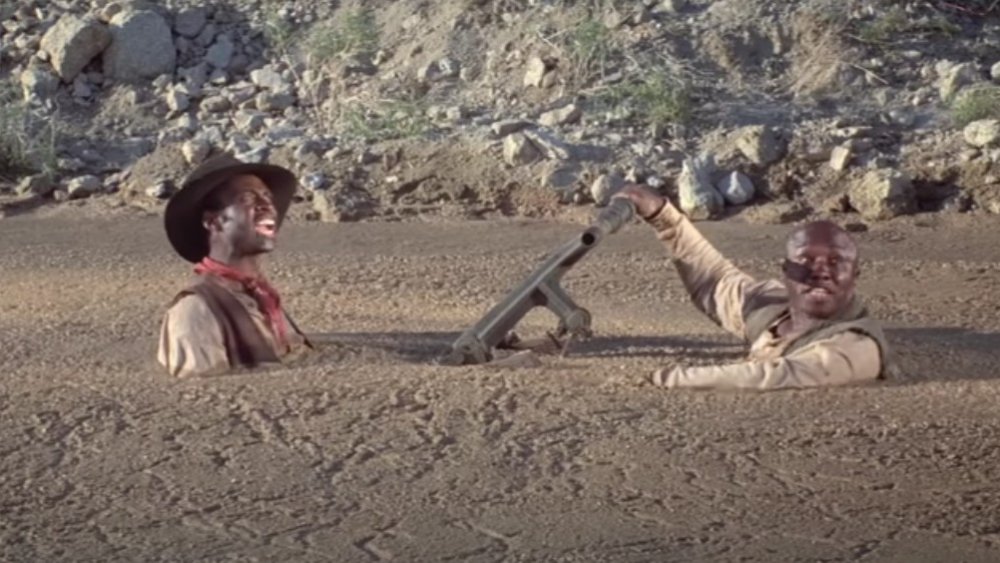How To Survive Sinking In Quicksand
In Blazing Saddles, Bart asks his co-worker, Charlie, an important question: "What is it that's not exactly water, and it ain't exactly earth?" The answer, of course, is quicksand. And hilarity ensues. So far, so good.
Quicksand is probably more important as a motion picture plot device than as an actual natural phenomenon that's waiting to suck you to your death the next time you stroll in the woods/jungle/cursed mall. It was especially popular in the 1960s — the BBC cites one study that found quicksand scenes in one out of 35 films during those years. Understandable, then, that an entire generation grew up petrified of slowly sinking into a semi-watery grave, unless someone else came along with a vine/stick/really long pretzel to pull them out.
Like a lot of movie tropes (and, for that matter, a lot of life) the facts behind the drama are less, well, dramatic. Yes, quicksand is a thing. No, it won't suck you down. Mostly. With a couple of caveats.
Floating is a better strategy
Quicksand is basically watery sand, though sometimes it involves loose soil or even clay. It's more common around river deltas — the "watery" part is pretty important. It's rarely more than a few feet deep, so there's a good chance you'll reach the bottom before you're completely covered. Quicksand is kind of like a rattlesnake — it's just fine as long as you don't agitate it. And, like meeting a rattlesnake in the wild (let's not even think about meeting a rattlesnake at home), it's best to keep a cool, calm head. Which is probably easier said than done, both in terms of the ground beneath your feet and those snakey eyes meeting yours.
To reduce it to simple physics, your body is more buoyant than the muck into which you might have stepped, or fallen, or been pushed. However you ended up in it, your body's density is about 62 pounds per cubic foot, about half that of quicksand at about 125 per cubic foot, says Live Science.
Try to stay calm, which is easier said than done
Yes, you might sink a bit, but thrashing about isn't going to help any. Encyclopedia Britannica explains that quicksand — sand that's saturated with water — "can be a mucky nuisance." But if you stay calm, relax, and slowly — "slowly" is an important feature here — bend backwards to lay on your back, you will indeed float.
"Oh, sure," you say. "What about all of the people who couldn't reach a vine or a stick or a pretzel? How do you know?" Glad you asked, as are the researchers at the University of Amsterdam, who used a test sample of actual quicksand and put aluminum balls, the same density as a human being, on its surface. Float-a-rama. Crisis averted.
There is such a thing as a sort of dry quicksand effect, as the BBC recounts. For instance, workers who fall into a grain silo can quickly become engulfed and, in effect, sucked down in and suffocate. Your best bet there is to get outside help as quickly as possible. But for wet quicksand, the best advice is applicable to so much of life: Lay back. Relax. Float free. Maybe have a pretzel.


